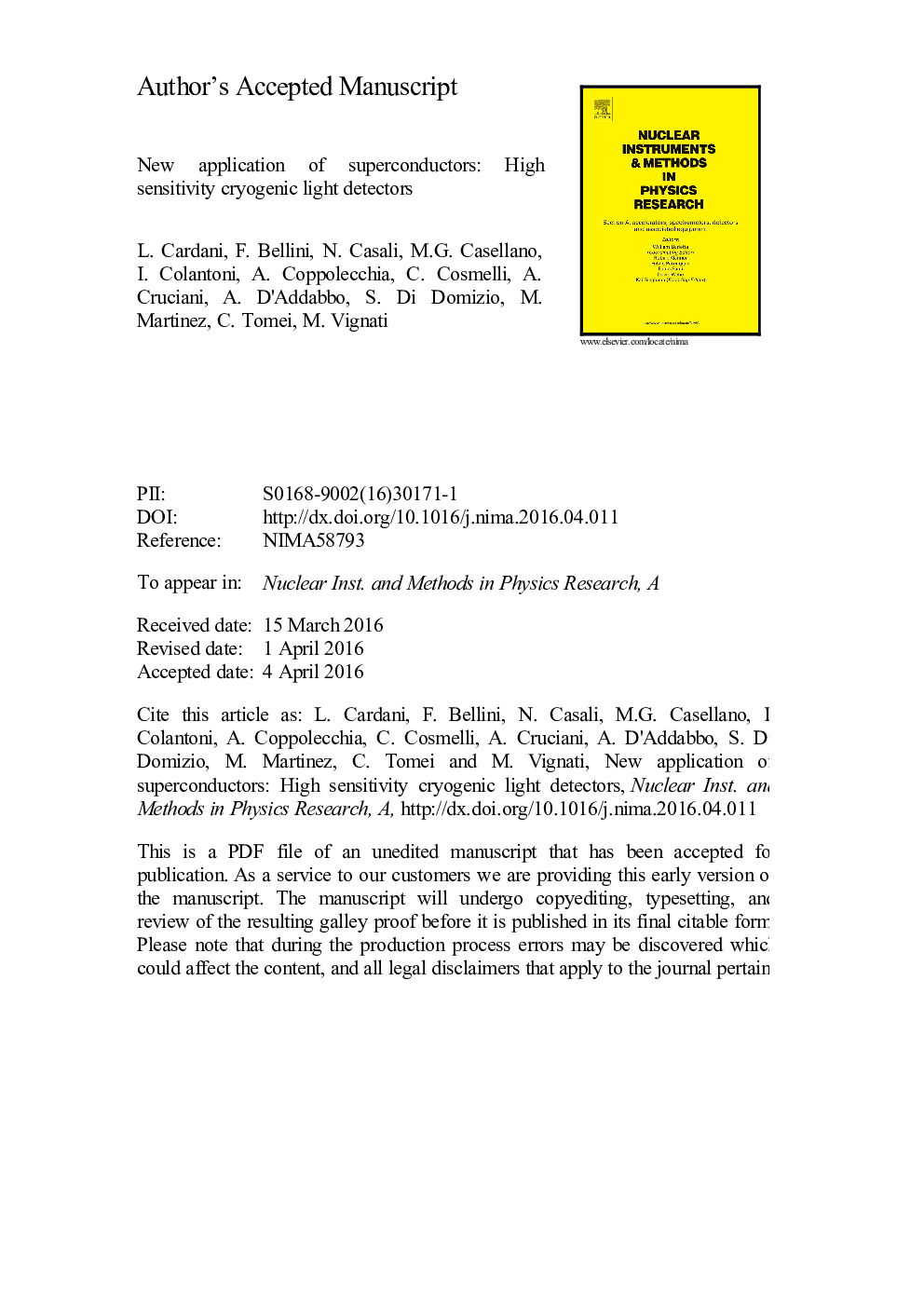| Article ID | Journal | Published Year | Pages | File Type |
|---|---|---|---|---|
| 5492884 | Nuclear Instruments and Methods in Physics Research Section A: Accelerators, Spectrometers, Detectors and Associated Equipment | 2017 | 6 Pages |
Abstract
In this paper we describe the current status of the CALDER project, which is developing ultra-sensitive light detectors based on superconductors for cryogenic applications. When we apply an AC current to a superconductor, the Cooper pairs oscillate and acquire kinetic inductance, that can be measured by inserting the superconductor in a LC circuit with high merit factor. Interactions in the superconductor can break the Cooper pairs, causing sizable variations in the kinetic inductance and, thus, in the response of the LC circuit. The continuous monitoring of the amplitude and frequency modulation allows to reconstruct the incident energy with excellent sensitivity. This concept is at the basis of Kinetic Inductance Detectors (KIDs) that are characterized by natural aptitude to multiplexed read-out (several sensors can be tuned to different resonant frequencies and coupled to the same line), resolution of few eV, stable behavior over a wide temperature range, and ease in fabrication. We present the results obtained by the CALDER collaboration with 2Ã2Â cm2 substrates sampled by 1 or 4 Aluminum KIDs. We show that the performances of the first prototypes are already competitive with those of other commonly used light detectors, and we discuss the strategies for a further improvement.
Keywords
Related Topics
Physical Sciences and Engineering
Physics and Astronomy
Instrumentation
Authors
L. Cardani, F. Bellini, N. Casali, M.G. Castellano, I. Colantoni, A. Coppolecchia, C. Cosmelli, A. Cruciani, A. D'Addabbo, S. Di Domizio, M. Martinez, C. Tomei, M. Vignati,
